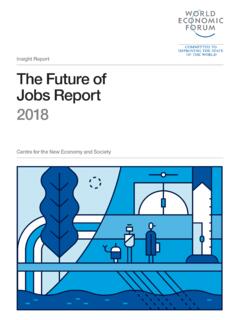Transcription of The Scrum Master Training Manual - Coach Agile Lille
1 The Scrum Master Training Manual A Guide to Passing the Professional Scrum Master (PSM) Exam Page 0, About the Authors The Scrum Master Training Manual Professional Scrum Master TM (PSM) Exam Version A Guide to Passing the By Nader K. Rad, Frank Turley The Scrum Master Training Manual A Guide to Passing the Professional Scrum Master (PSM) Exam Page 1, About the Authors The Scrum Master Training Manual A Guide to Passing the Professional Scrum Master TM (PSM) Exam By Nader K. Rad, Frank Turley Management Plaza Vr. (check for newer versions at ) Copyright 2013 Management Plaza All rights reserved. With the exception of brief passages and quotes for reviewing or commenting purposes, no part of this publication may be reproduced or transmitted in any form or by any means without prior consent of Management Plaza.
2 Professional Scrum Master and PSM are trademarks of The Scrum Master Training Manual A Guide to Passing the Professional Scrum Master (PSM) Exam Page 2, About the Authors Table of Contents About the Authors .. 3 About the PSM I Certification .. 4 1 Introduction .. 6 What Is Scrum and Agile ?.. 6 When do We Need to Use Agile ? .. 6 When Can We Use Agile ? .. 6 Agile Manifesto .. 7 2 Scrum 9 Scrum Team .. 9 Role 1: The Product Owner .. 10 Role 2: The Scrum Master .. 12 Role 3: The development Team .. 13 Other Roles and Titles .. 14 So Who Is the Project Manager? .. 14 3 Scrum Events .. 16 The Nature of Scrum Events .. 16 The Time-Box Concept .. 17 Event 1: The Sprint.
3 17 Event 2: Sprint Planning .. 19 Event 3: Daily Scrum .. 22 Event 4: Sprint Review .. 23 Event 5: Sprint Retrospective .. 24 Activity: Product Backlog Refinement .. 25 4 Scrum Artifacts .. 27 Artifact 1: Product Backlog .. 27 Artifact 2: Sprint Backlog .. 29 Artifact 3: Increment .. 29 Definition of Done .. 30 Monitoring Progress Toward a 31 Monitoring Sprint Progress .. 32 Velocity .. 32 5 What s Next?.. 35 The Scrum Master Training Manual A Guide to Passing the Professional Scrum Master (PSM) Exam Page 3, About the Authors About the Authors Nader K. Rad is a project management author and adviser at Management Plaza. His career started in 1997 and he has been involved in many projects in different industries.
4 He has designed a number of project management courses, prepared a number of e-learning materials, and written more than 40 books and plenty of practical articles on project management concepts and standards, planning software , scheduling, etc. Nader has been the official reviewer for PRINCE Agile , and the new edition of PRINCE , a contributor to the PMBOK Guide, and consultant for the Agile Scrum Master certification program. He is certified as PMP , PRINCE2 Practitioner, MoP Practitioner, MSP Foundation, M_o_R Foundation, MoV Foundation, P3O Foundation, AgilePM Practitioner, ITIL Foundation, CSM , PSM I, PSPO I, EXIN Agile Scrum Foundation, and Advanced Certification in Structured and Critical Thinking.
5 Author s website: Author s LinkedIn Profile: Frank Turley has been a project manager for more than 15 years and a PRINCE2 Practitioner and Scrum Master . He is also a PRINCE2 and Project Management trainer and Coach and has written a number of PRINCE2 and Project Management related books. Frank is best known in the PRINCE2 world for his work in creating the most popular PRINCE2 Self Study Training materials, including: The PRINCE2 Foundation Training Manual and video course The PRINCE2 Practitioner Training Manual The PRINCE2 Sample Project Author s website: Author s LinkedIn Profile: The Scrum Master Training Manual A Guide to Passing the Professional Scrum Master (PSM) Exam Page 4, About the PSM I Certification About the PSM I Certification is a leading certification body for Scrum , which was founded in 2009 by Ken Schwaber and Alex Armstrong.
6 Its main certification on Scrum , called PSM I (Professional Scrum Master TM level 1) is one of the most famous certificates in the Scrum community. It validates gained fundamental knowledge of the Scrum framework and its application. The PSM I Exam is 80 multiple choice, multiple answer, and true/false questions. The duration of the exam is 60 minutes. The passing score is 85%. The exam costs $150 and you can take it online. You need to understand the official Scrum Guide (from ), which you will find very easy to read after reading this book. This book helps you understand the Scrum Guide better, and easier. We also provide the following two materials for the exam. Samples of both are available in PSM I Simulated Exams 3 sets of exams with complete explanations for each question.
7 PSM I Preparation Online Course A complete online course on the core Scrum framework that prepares you for the exam. The Scrum Master Training Manual A Guide to Passing the Professional Scrum Master (PSM) Exam Page 5, About the PSM I Certification Introduction The Scrum Master Training Manual A Guide to Passing the Professional Scrum Master (PSM) Exam Page 6, Introduction 1 Introduction What Is Scrum and Agile ? It is not possible in some projects to gather all the requirements upfront because of their extreme uncertainties. So we use an adaptive method instead of a predictive one, in which we only define and plan a short period in the future, create a working product, and use the product to understand the needs and use the feedback to plan further and add more functionalities to the product.
8 Adaptive methods are called Agile . There are many Agile frameworks. The most famous Agile framework is Scrum . Agility is about project development , but they also explain a little about the project management aspects in such environments. However, remember that the main point of Agile frameworks is not providing a project management system, but a project development system. When do We Need to Use Agile ? Agility is helpful when it s hard to define the product upfront, because we can t understand it entirely, or the customer keeps changing its mind. In those cases, if you try to use a predictive method with upfront plans, you will have many change requests, and it will decrease your productivity and increase time and cost.
9 When Can We Use Agile ? Agility is based on adaptation, which in turn is based on the capability of producing pieces of working product throughout the project and using that for receiving feedback from the end users or their representatives. The interim outputs should be working product, because otherwise we won t be able to receive real feedback. The working product is always incremental , which means we keep adding new features to it. The development should be iterative , which means we should repeat the development processes ( design) for each Increment. We can only use Agile when the product has the capability to be developed iteratively and incrementally. Unfortunately, not every product has it.
10 The best case for Agility is software development . It s also used in some research projects, and many programs ( organizational change initiatives). The Scrum Master Training Manual A Guide to Passing the Professional Scrum Master (PSM) Exam Page 7, Introduction Agile Manifesto In 2001, a group of software developers published a manifesto that has since been considered the core of all Agile methods. The complete Agile manifesto is as follows: We are uncovering better ways of developing software by doing it and helping others do it. Through this work we have come to value: Individuals and interactions Over processes and tools Working software Over comprehensive documentation Customer collaboration Over contract negotiation Responding to change Over following a plan That is, while there is value in the items on the right, we value the items on the left more.






